Idea by
Ludovico Centis and U67
Call for ideas 2016
Foresturbia
Foresturbia

Urbanization in Europe is diffused and deeply intertwined with nature: it is not generic, not isotropic, not flat, not stable. On one side plenty of data collection, on the other fascinating urban visions, in the middle a void of policies and effective actions.
“Foresturbia” is a manual that addresses this void by investigating the area of Hovinbyen in Oslo, considering it a paradigm of contemporary European opportunities and challenges. The manual is a tool of knowledge, addressing issues that contribute to regenerate and build a sustainable living environment at different scales, from the territorial to the domestic one. It contains a wide array of technological solutions and urban tactics that should be taken into account by all the decision makers, designers and citizens that face the transformation and improvement of the city. Drawings and texts make it easy to handle and accessible for everyone, allowing several layers of comprehension and envisioning a more inclusive society.
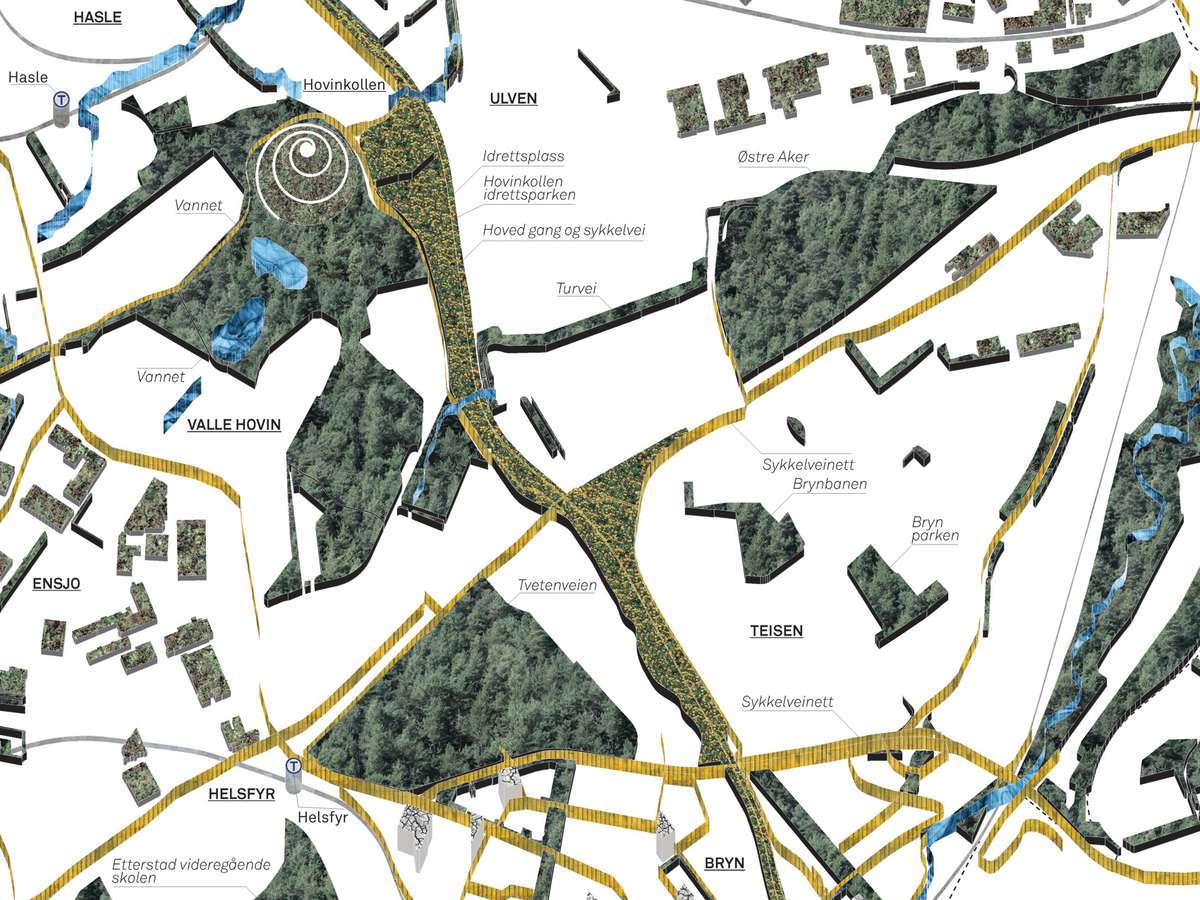
“Foresturbia” deals with the creation of shared identity in a mixed area of Oslo that is expected to host 200.000 new inhabitants within 2030. The strategy envisions three main moves: a new map of comprehension showing the common ground and the green backbone of such a heterogeneous urban structure; a physical landmark for a new perception and understanding of the area itself, and the publication of a shared tool of knowledge regarding the design approach: “Manual for a Landscaped city”.
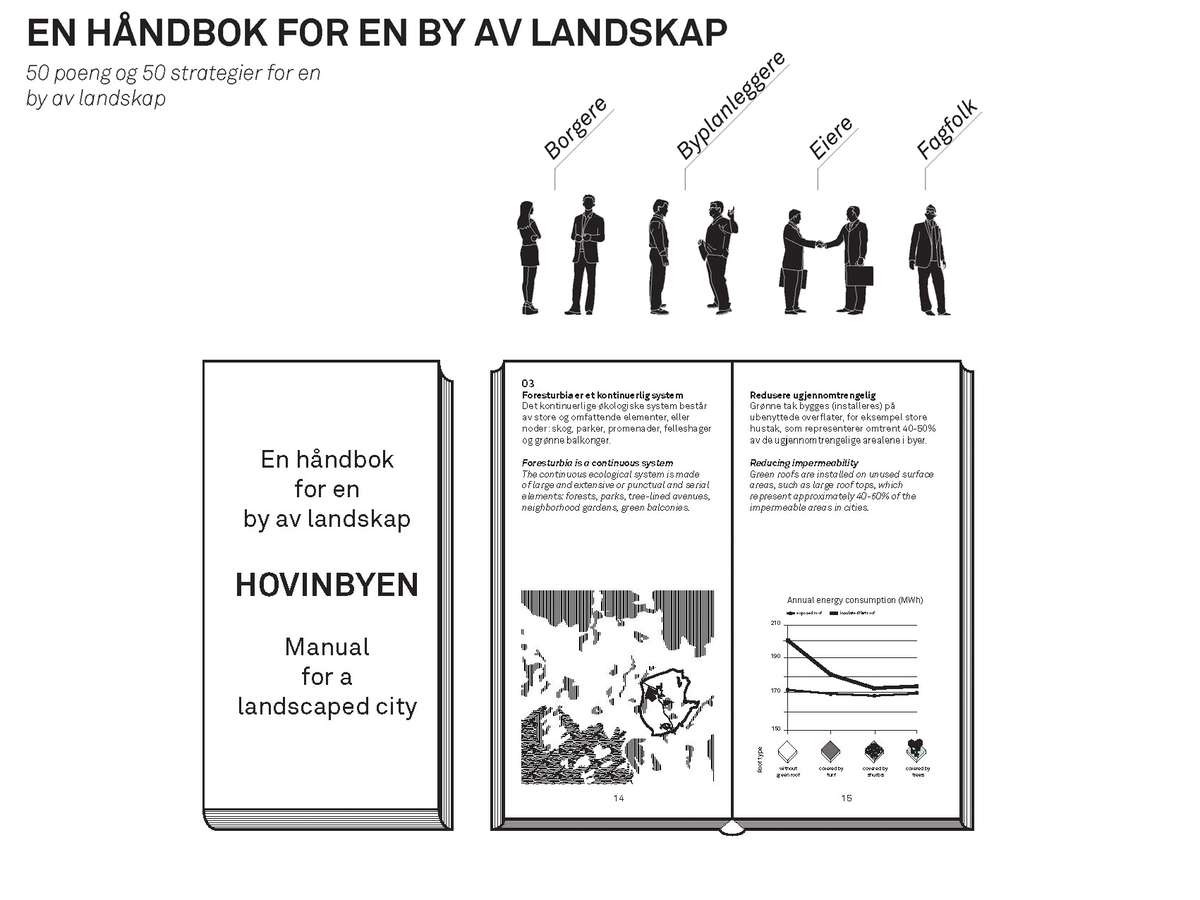
“Foresturbia” is a manual, easy to handle for different users. It is intended as a tool of knowledge containing a wide array of solutions that should be taken into account by all the decision makers, designers and citizens that will face the improvement of the city. It is a cluster of instructions organized in correspondence with a detailed visual layout, in which both words and illustrations work together towards clarifying the complexity and breadth that the design proposal foresees.
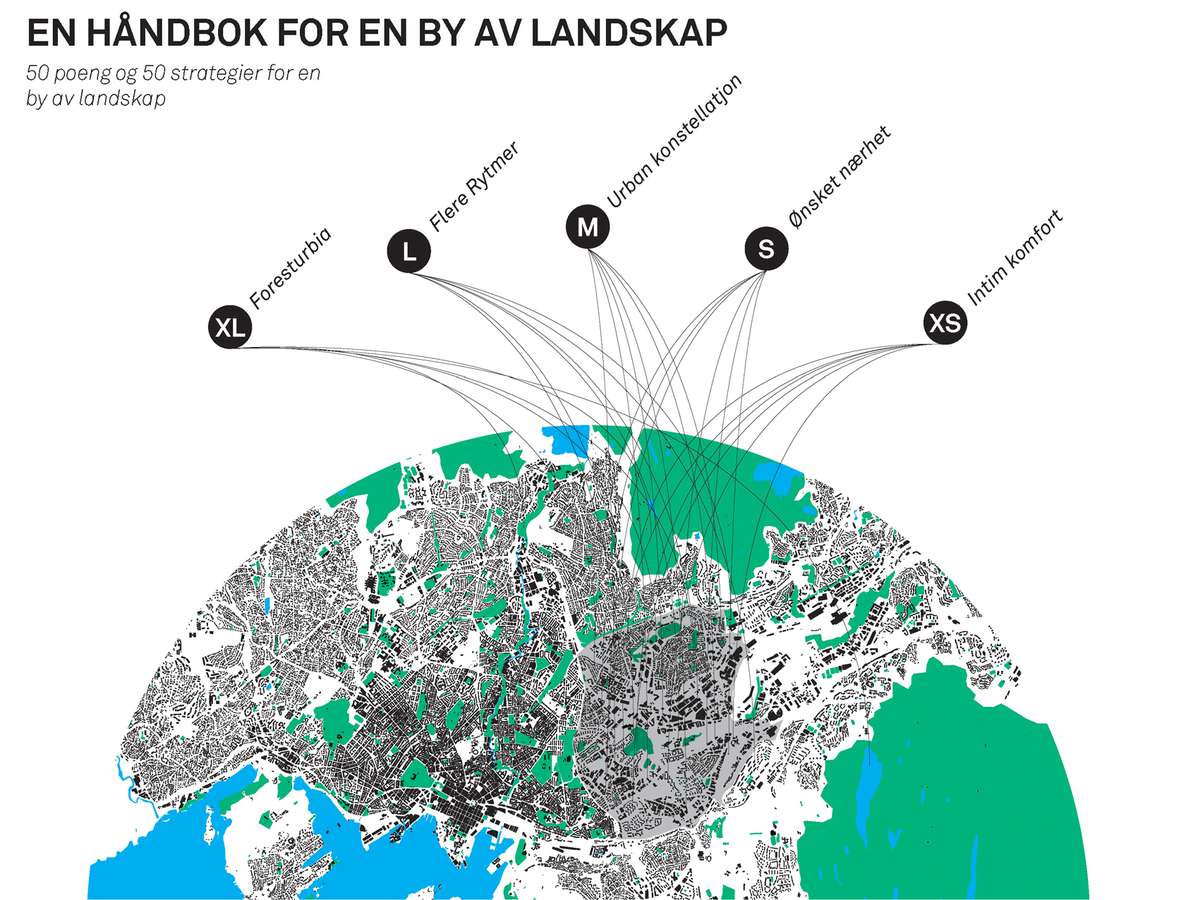
A sneak peek into the five design scales: XL relates to the definition of Foresturbia in a regional framework, at the intersection of environmental and infrastructural systems; L deals with the relations between interconnected neighborhoods that define Multiple Rhytms of the city; M relates to a more defined portion of the city and its urban issues, looking at it as an Urban Constellation; S deals with Desired Proximity inside the community; XS relates to a domestic scale, to Intimate Comfort.
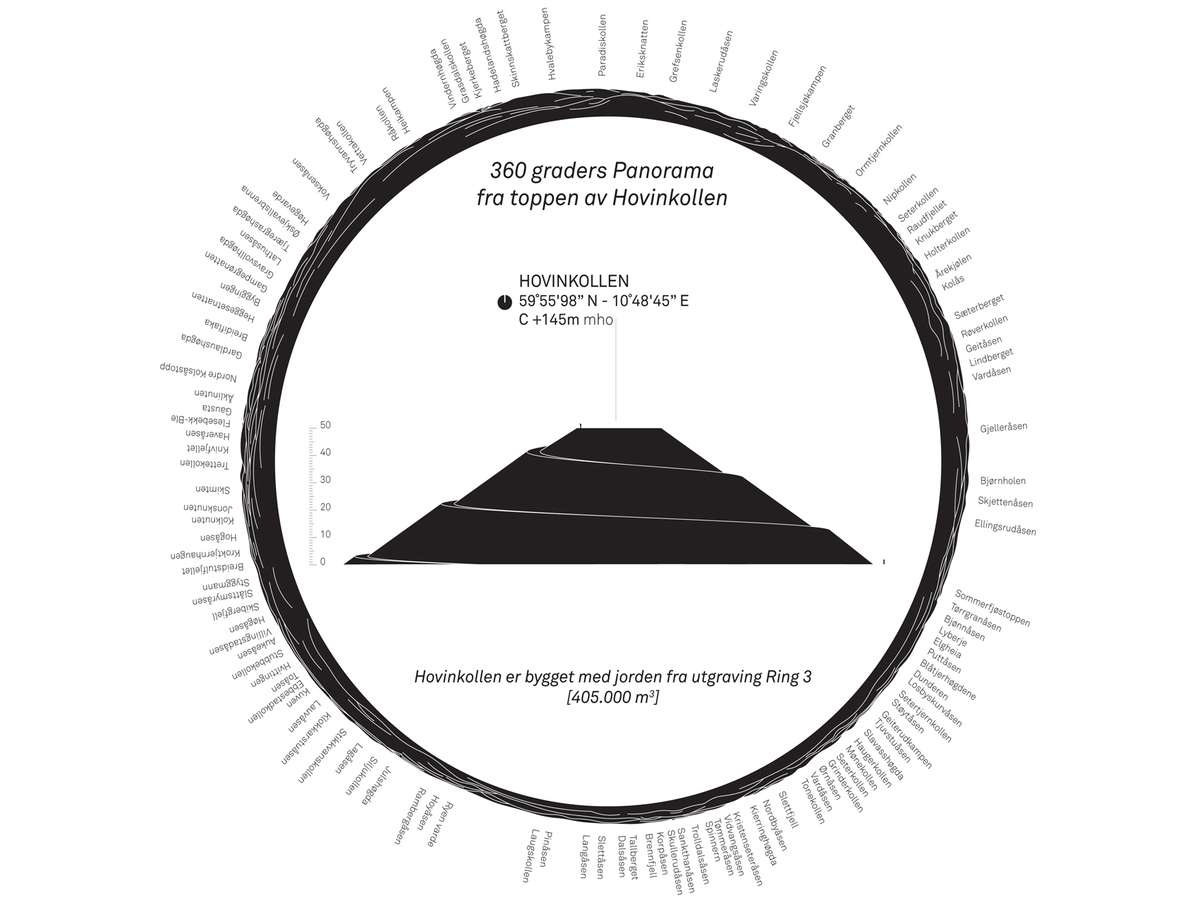
“Hovinkollen” is a physical landmark, a public park developed as a mound that is able to enlarge the understanding of the focus area by the several involved actors, citizens grown up in the neighborhood or immigrants coming from all over the world. A territorial device that enables the perception of a 360 degrees panorama, where the possibility to recognize and name places and specific locations is a crucial part of the strengthening of the identity and the place-making of the “Foresturbia”.
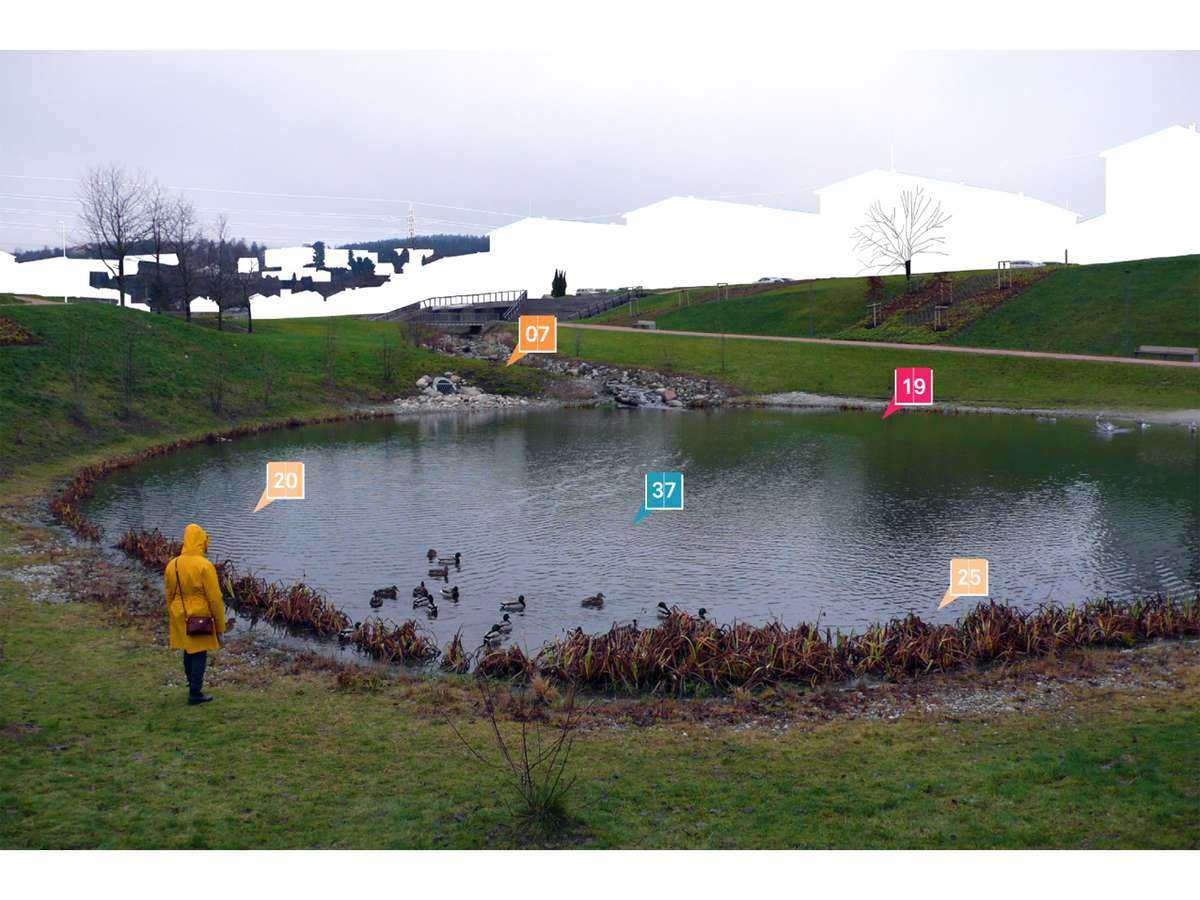
“Foresturbia” looks for a balanced and intense relationship between landscape and urbanization. Addressing 50 strategies and 50 challenges, the proposal works at the intersection of the physical, cultural and economic environments. With the goal to set a shared background and awareness, the manual foresees the citizens at the center of the transformation process, involving, engaging, and providing them knowledge and tools to both understand and play an active role in the urban design field.
Foresturbia
Foresturbia

Urbanization in Europe is diffused and deeply intertwined with nature: it is not generic, not isotropic, not flat, not stable. On one side plenty of data collection, on the other fascinating urban visions, in the middle a void of policies and effective actions.
“Foresturbia” is a manual that addresses this void by investigating the area of Hovinbyen in Oslo, considering it a paradigm of contemporary European opportunities and challenges. The manual is a tool of knowledge, addressing issues that contribute to regenerate and build a sustainable living environment at different scales, from the territorial to the domestic one. It contains a wide array of technological solutions and urban tactics that should be taken into account by all the decision makers, designers and citizens that face the transformation and improvement of the city. Drawings and texts make it easy to handle and accessible for everyone, allowing several layers of comprehension and envisioning a more inclusive society.

“Foresturbia” deals with the creation of shared identity in a mixed area of Oslo that is expected to host 200.000 new inhabitants within 2030. The strategy envisions three main moves: a new map of comprehension showing the common ground and the green backbone of such a heterogeneous urban structure; a physical landmark for a new perception and understanding of the area itself, and the publication of a shared tool of knowledge regarding the design approach: “Manual for a Landscaped city”.
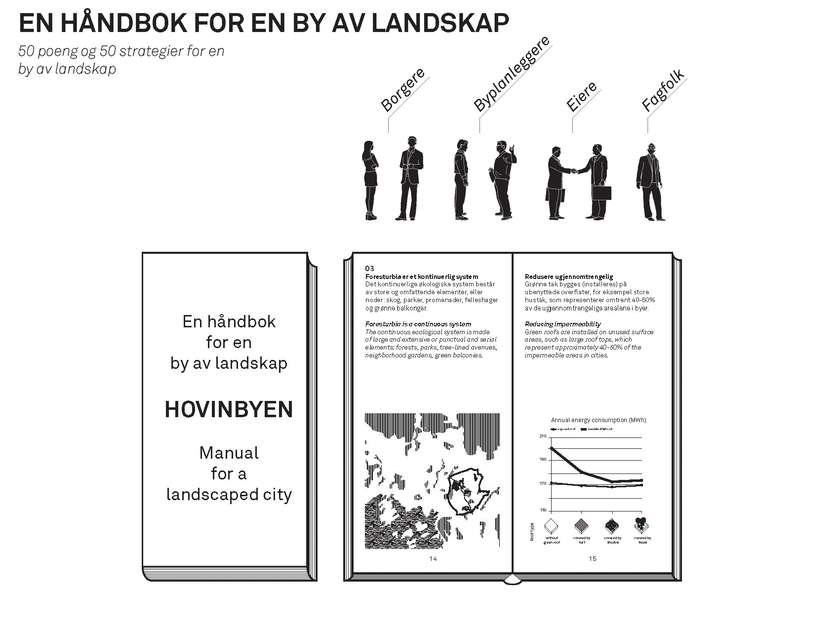
“Foresturbia” is a manual, easy to handle for different users. It is intended as a tool of knowledge containing a wide array of solutions that should be taken into account by all the decision makers, designers and citizens that will face the improvement of the city. It is a cluster of instructions organized in correspondence with a detailed visual layout, in which both words and illustrations work together towards clarifying the complexity and breadth that the design proposal foresees.
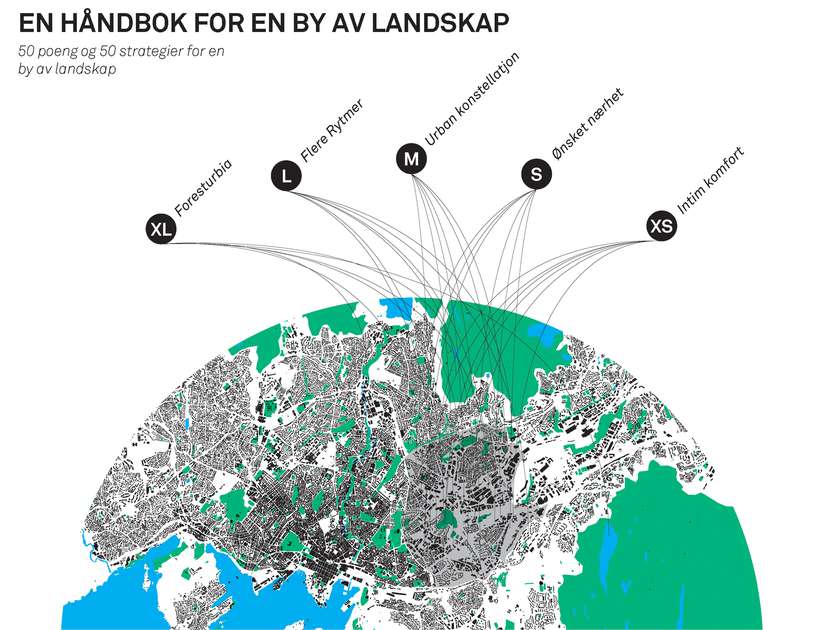
A sneak peek into the five design scales: XL relates to the definition of Foresturbia in a regional framework, at the intersection of environmental and infrastructural systems; L deals with the relations between interconnected neighborhoods that define Multiple Rhytms of the city; M relates to a more defined portion of the city and its urban issues, looking at it as an Urban Constellation; S deals with Desired Proximity inside the community; XS relates to a domestic scale, to Intimate Comfort.
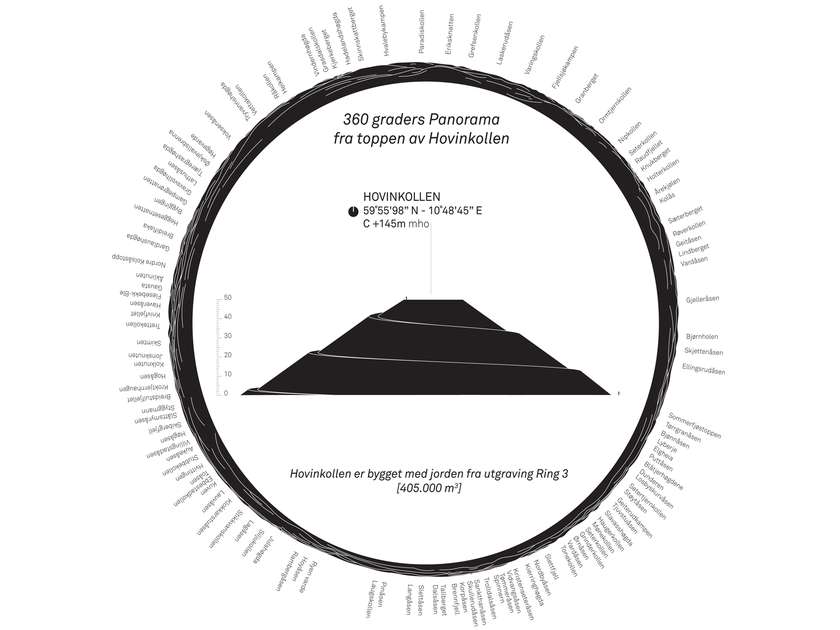
“Hovinkollen” is a physical landmark, a public park developed as a mound that is able to enlarge the understanding of the focus area by the several involved actors, citizens grown up in the neighborhood or immigrants coming from all over the world. A territorial device that enables the perception of a 360 degrees panorama, where the possibility to recognize and name places and specific locations is a crucial part of the strengthening of the identity and the place-making of the “Foresturbia”.

“Foresturbia” looks for a balanced and intense relationship between landscape and urbanization. Addressing 50 strategies and 50 challenges, the proposal works at the intersection of the physical, cultural and economic environments. With the goal to set a shared background and awareness, the manual foresees the citizens at the center of the transformation process, involving, engaging, and providing them knowledge and tools to both understand and play an active role in the urban design field.